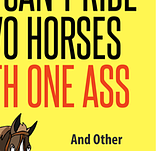
11 Apr Branded Genius: Kurt Bartolich
Branded Genius: Kurt Bartolich
Branded genius Kurt Bartolich is the reason we are RAISING CLARITY. Kurt is the branding specialist who studied what we offer and then created a brand from what was just a lot of potential.
Kurt’s work runs very deep. I’ve tried to convey that as an amateur at branding myself.
Last, Kurt has written a book! So meet him and see how brilliantly he thinks about stuff you might never have thought about before. (And if you already know you want the book, find it here.)
RAISING CLARITY asked
How would you put in a paragraph or two at most what is so different about your approach to brand, so unique and unusual? (This isn’t a challenge, it’s an invitation–I totally see your work in this way.)
Kurt responded
What sets your company BrandCertain apart in creating, evolving or repositioning brands is rooted in these three intrinsically-linked ideals:
1. A brand position should be excavated objectively, not created subjectively.
I only work with clients who will allow me to conduct attitudinal research with their consumers. Why? There is always a chasm between what the company perceives and what consumers perceive or need. To what degree varies but even a small gap can hurt an organization’s/company’s ability to connect with their consumers consistently and meaningfully. Think about it this way: If you were flying to the moon and were just one little degree off course you’d miss the target by over 4,100 miles. (I hope you have extra fuel!)
Here are a couple of specific examples to illustrate this point: I just finished delivering consumers insights for a regionally based ice cream brand that is number two in a market competing against national brands. The company believed that being “locally-made” was its advantage but when consumers were queried they rated it as one of the lowest motivators for purchasing ice cream (even its own partisans found it irrelevant). In another example, a county in Central Kansas we worked with on repositioning believed “ history” was what attracted visitors but in actuality it was the restorative qualities (body, mind and spirit) of the majestic hills and wide open spaces that drew people in.
Far too often, people—including, agencies and marketing firms—are simply guessing. I believe in knowing and use facts not fiction to guide brand positioning.
2. A brand position should be built first from inside the organization out to your customers.
It’s the only way to ensure that the promise of your brand and the payoff your consumers expect are always one and the same. It’s why we focus on creating a brand mission first—the organizational compass that bridges company purpose and customer brand, ensures every person, process and platform is true to the brand and becomes the True North for every business, operational, marketing, personnel and identity decision. This is critical because a position IS what you do, not just what you say you do.
3. Brand IS your strategy.
Period. Far too often, people inside organizations & companies—even at the highest levels —misunderstand brand. They confuse it with labeling (affixing your logo and slogan to everything) or treat it as an activity or department. Not only does this create incongruency in how the brand is executed by your team and experienced by your consumers, it fosters a business-over-brand climate. The disconnect is consumers don’t buy businesses, they buy brands. Do you go to the store to get Unilever Ice Tea and P&G toothpaste or Lipton and Crest? Changing the ethos of your organization to be driven by brand decisions first, business decisions second (like Southwest Airlines, Ritz-Carlton and Apple, to name a few) is more important than what you actually do in the market place.
RAISING CLARITY asked
What is different about working with “spiritual” brands? Is that even a thing? Does the question make sense? I mean brands like mine where there is not a product, and where we may have a somewhat challenging time distinguishing what we do (period, and from others who do something similar).
Kurt responded
Great question and something that’s going to take a little unpacking to address…and make sense (hopefully).
Yes, it is a thing, though I speak about brands without a physical product as its foundation as being “concept-driven” brands. Yet, no different than product-driven brands, concept brands too need something more tangible to clarify who they are and what they do. I refer to it as a “mental handle.” Think of it this way: A stick and a string could represent something different to you than to me. But once you attach a handle, now we are both likely to see a fishing pole.
When you look more closely at concept-driven brands vs. product-driven brands, there’s a paradox. Concept-driven brands need to find something more “tangible” to provide a distinctive mental handle and product brands need to find something a bit more “conceptual” to differentiate their widgets. For example, Apple, at its core is a product-driven brand yet it needed the more conceptual “intuitive” to clarify its unique value and stand apart from the competition. Otherwise, it’s just another keyboard and screen. Conversely, (no political agenda here), Bernie Sanders would be just another candidate for president if wasn’t for his more tangible, “socialist” platform. Being a “socialist” in essence is his product.
Your brand is a good example of a concept-driven brand that needed to find a mental handle. What if you had settled on the idea of “abundance” to represent what you do? Would people have understood what it meant and what you did? Unlikely because it’s too subjective. Besides, abundance is a “result” not a “reason.” A more tangible mental handle provides the reason to choose you!
Which leads us to “clarity”—an idea that is easier to grasp. But why is it easier for people to understand than abundance? While true that clarity can mean different things to different people (and you have to provide context to how you define clarity), it has a more overt opposite—unclear. Sure, abundance, has an opposite in non-abundant but it has many other potential opposites like poverty, scarcity, inadequacy, etc.. With clarity, it’s essentially either clear or unclear.
I find thinking in contrasts helps any brand—but particularly concept-driven brands—find their mental handle. For example, BrandCertain’s mental handle is “inside-out”—as in helping clients build their brands from inside their organization out to their customers and prospects. This is in contrast to most “brand” practitioners and agencies, which take an overtly outside-in approach (proliferation of slogans, campaigns, logos, etc.) “Inside-out” is my reason and also is a strategy rather than the tactics peddled by others.
RAISING CLARITY asked
Last question, why did you write this book?
Kurt responded
I’d like to present my motives for writing the book, You Can’t Ride Two Horses With One Ass, on two fronts: goals and reasons. My goals for it include marketing my brand and opening doors to more client and speaking opportunities. Having a book under your belt does create a credential that can impact all. But those goals can also be achieved in other ways. I actually see those as results not reasons. If none of those things happen for me as a result of the book I’m okay with that. More important, I felt called to write a book advocating for the misinformed and as a referendum against unsubstantiated yet universally accepted brand bullsh*t.
Much of what people believe today about brand comes from supposition, conventional thinking and best practices. Much of it is propagated by business consultants, bloggers and advertising professionals. For the record, I’m not anti-agency. I’ve worked at agencies and I still partner with some on research and brand positioning. I meet smart and talented people at agencies all the time. Yet, most of what an agency does is tactical in nature—campaigns, SEO, social media, websites, etc. While these are necessary in today’s world, far too often they’re passed off as strategy or branding—neither of which they are or ever will be. All are tactics to a brand strategy.
My book presents evidence that creating a successful and enduring brand requires objectivity over subjectivity, brand over business decisions and authenticity over expansion. This runs counter to today’s corporate climate that pushes scaling, innovating and disrupting. But more than a manifesto against others, You Can’t Ride Two Horses With One Ass is really about what goes on between your ears and how changing your ethos is the first step in transforming your brand. I hope my book fulfills this purpose.
Thank you for the wonderful opportunity to participate in this blog!




Pingback:What Makes You Unique is What Your Brand DOESN'T Do - RAISING CLARITY
Posted at 14:04h, 24 August[…] is a follow-on post to our last one featuring brandmaster Kurt Bartolich. Kurt is emphatic about the importance of being objective […]
Pingback:What Makes You Unique is What Your Brand DOESN’T Do – RAISING CLARITY
Posted at 11:13h, 14 April[…] is a follow-on post to our last one featuring brandmaster Kurt Bartolich of GUTS Branding. Kurt is emphatic about the importance of […]